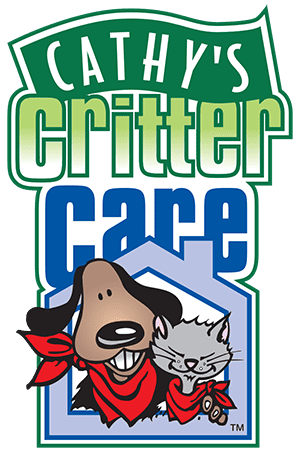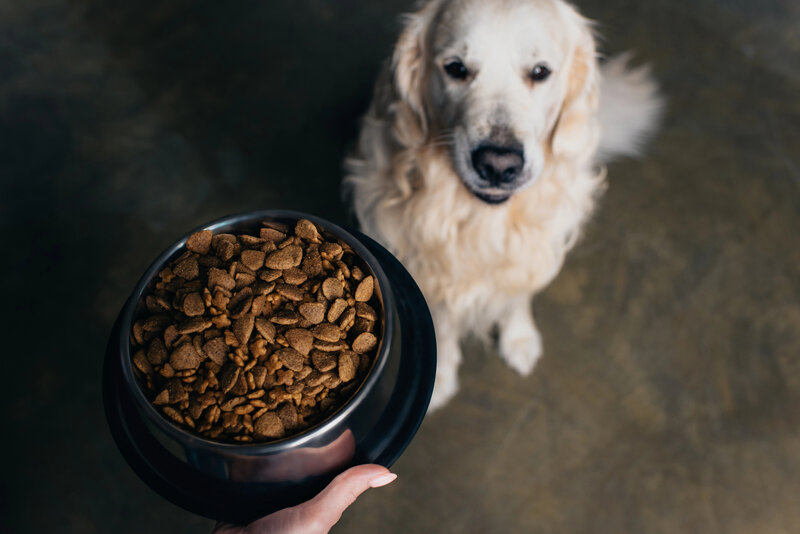Wondering how often you should be feeding your furry best friend? It’s a common question among dog owners, aiming to strike the perfect balance between keeping their pups happy and healthy. The truth is, there isn’t a one-size-fits-all answer, as a dog’s nutritional needs change with age, size, and activity level.
From energetic puppies needing several meals a day to support their growth, to adult dogs thriving on a twice-daily feeding schedule, and seniors who might require a tailored plan to suit their slowing metabolism—navigating your dog’s dietary needs can seem like a puzzle. But fret not! This article dives deep into the world of canine nutrition, offering insights on creating the ideal feeding schedule for your dog at every stage of their life.
Whether you’re a new pet parent or looking to refine your old buddy’s diet, we’ve got the scoop on keeping your dog’s tail wagging at mealtime.
What is the recommended frequency for feeding a dog?
Feeding a dog the right amount at the right frequency is essential for its health and well-being. Generally, the recommended feeding frequency for dogs varies by age, size, and health needs.
- Puppies typically require three to four meals a day to support their rapid growth and development.
- As they transition into adulthood, which is around the age of one year for most breeds, this can be reduced to two meals a day.
- Senior dogs, depending on their health status and dietary requirements, may continue on two meals or might need adjustments as recommended by a veterinarian.
It’s important to note that while these guidelines provide a general framework, the specific needs of each dog can vary. Factors such as breed, activity level, and any health issues can influence the optimal feeding schedule and amount. Consulting with a veterinarian can provide personalized advice tailored to an individual dog’s needs, ensuring they receive the right nutrition for a healthy life.
In summary, the feeding frequency for dogs generally starts higher in puppyhood and decreases as they age. However, individual needs based on various factors should always be considered, with professional veterinary guidance being invaluable to establish the best feeding regimen. To illustrate how breed and size may affect feeding frequency:
| Breed Size | Examples | Feeding Frequency | Notes |
|---|---|---|---|
| Small | Chihuahuas | 3-4 meals a day | Smaller breeds have faster metabolisms and may benefit from more frequent, smaller meals. |
| Medium | Beagles | 2-3 meals a day | Medium breeds can often transition to fewer meals as they reach adulthood. |
| Large | German Shepherds | 2 meals a day | Larger breeds may require only two larger meals a day, suited to their slower metabolisms. |
Why is it important to feed your dog regularly?
Regular feeding schedules are crucial for dogs to maintain optimal health. Consistent meal times help keep their energy levels stable, supporting both physical activities and mental alertness throughout the day. This regularity also aids in digestive health, minimizing the risk of issues like constipation or diarrhea by allowing the digestive system to process meals efficiently.
Furthermore, a set feeding routine helps prevent overeating. By providing meals at specific times, rather than free-feeding, dogs are less likely to consume excess calories, reducing the risk of obesity—a significant factor in long-term health problems. In essence, regular feeding is not just about sustenance; it’s about promoting a balanced lifestyle that supports a dog’s overall well-being.
Studies, such as those conducted by the Association of Pet Obesity Prevention, have shown that regular feeding times can significantly improve a dog’s digestive health and reduce anxiety around meal times. For example, a study published in the Journal of Veterinary Behavior found that dogs fed on a consistent schedule exhibited fewer signs of anxiety and stress compared to those fed irregularly.
Maintains Energy Levels for Daily Activities
Regular feeding ensures dogs have the consistent energy they need for their daily activities, vital for play, exercise, and training. Fluctuating feeding times can negatively affect a dog’s energy levels and mood, leading to lethargy or hyperactivity. Consistent meal times contribute to better training sessions and more predictable behavior, enhancing the bond between dogs and their owners.
Supports Digestive Health, Preventing Constipation or Diarrhea
A consistent feeding schedule supports the digestive system, allowing it to process food efficiently and helping prevent common digestive issues. Irregular feeding schedules can disrupt a dog’s digestive system, leading to problems such as acid reflux or gastritis. Veterinarians often recommend feeding times that align with a dog’s natural digestive cycles to promote optimal digestive health.
Prevents Overeating, Reducing the Risk of Obesity
Scheduled feedings control meal portions, significantly reducing the risk of obesity and contributing to a healthier lifestyle for dogs. According to the Association for Pet Obesity Prevention, an estimated 56% of dogs in the United States were overweight or obese in 2018. Controlled feeding times, coupled with specific portion control techniques, can help manage a dog’s weight effectively, reducing the risk of obesity-related health issues.
What factors influence feeding frequency?
The optimal feeding frequency for dogs is influenced by several key factors, including age, activity level, health status, and breed size. Understanding these factors helps in creating a feeding schedule that supports a dog’s overall well-being.
| Factor | Description | Examples |
|---|---|---|
| Age | Younger dogs, especially puppies, require more frequent meals to support their growth and development, while adult dogs can be fed less frequently. Senior dogs may need adjustments based on health considerations. | Puppies: 3-4 times a day |
| Adults: 2 times a day | ||
| Seniors: 1-2 times a day, with adjustments | ||
| Activity Level | More active breeds may need additional nutrition to fuel their energy needs, whereas less active dogs can do well with standard feeding frequencies. | High-energy breeds (e.g., Border Collie): More frequent or larger meals |
| Low-energy breeds (e.g., Bulldog): Standard feeding frequency | ||
| Health Status | Dogs with specific health conditions may require special feeding schedules or dietary adjustments. | Diabetes or kidney disease: Customized feeding schedules as per veterinary guidance |
| Breed Size | Breed size influences meal frequency, with smaller breeds often benefiting from more frequent, smaller meals to maintain their metabolism. | Small breeds: More frequent, smaller meals |
| Large breeds: Standard frequency, larger portions |
Age: Puppies vs. Adult vs. Senior Dogs
Puppies need to be fed more frequently to support their rapid growth, while adult dogs require fewer meals to maintain a stable metabolism. Senior dogs may continue with two meals or need adjustments based on health considerations.
Activity Level: High-Energy Breeds vs. Low-Energy Breeds
High-energy breeds may require more food or more frequent feeding to fuel their activities, while low-energy breeds often do well with the standard twice-a-day feeding schedule.
Health Status: Dogs with Medical Conditions
Dogs with specific health conditions may need customized feeding schedules or dietary adjustments, tailored to manage and support their health effectively.
Breed Size: Small Breeds vs. Large Breeds
Small breeds benefit from more frequent, smaller meals to keep their energy levels consistent and support their faster metabolisms. Large breeds can typically adhere to the standard feeding frequency but may require larger portions to meet their nutritional needs.
How often should puppies be fed?
Puppies require frequent feeding to support their rapid growth and development. Ideally, they should be fed three to four times a day. This frequent feeding schedule ensures they receive the necessary nutrients to grow healthy and strong.
As puppies transition to adult dogs, usually around one year of age, their feeding frequency can be adjusted to twice a day. This gradual reduction aligns with their slowing growth rate and changing nutritional needs.
3-4 Times a Day for Consistent Growth
Feeding puppies three to four times daily is crucial for providing the necessary nutrients that support consistent and healthy growth.
| Puppy Age (Months) | Meals Per Day | Nutritional Focus | Notes |
|---|---|---|---|
| 0-2 | 4 | High-quality puppy food rich in protein | Small, frequent meals to support rapid growth |
| 2-6 | 3-4 | Balanced diet with proteins, fats, and carbohydrates | Begin to adjust meal size up as they grow |
| 6-12 | 2-3 | Transition to adult food, if recommended by vet | Gradually decrease meals as they approach adulthood |
| 12+ | 2 | Adult dog food, tailored to breed size and energy level | Establish a consistent feeding schedule |
Guideline on Decreasing Feeding Frequency:
- 0-2 Months: Puppies should be fed four times a day with meals spaced evenly throughout the day. The diet should be high in protein to support their development.
- 2-6 Months: Continue with three to four meals a day, adjusting the portion sizes as the puppy grows. This is a critical period for growth, so ensure the diet is balanced.
- 6-12 Months: Begin transitioning to two to three meals a day. This is also the time to start introducing adult dog food, depending on the breed and advice from your veterinarian.
- 12+ Months: Most dogs should be fully transitioned to two meals a day. The diet should now be consistent with adult dog food, tailored to the dog’s breed size, energy level, and any specific health needs.
Transitioning Nutritional Content: As puppies grow, their nutritional needs change. Early on, a high protein intake is crucial for development. As they age, the focus shifts towards a balanced diet that supports a healthy transition to adulthood.
This includes a careful balance of proteins, fats, carbohydrates, minerals, and vitamins. Consultation with a veterinarian can provide guidance on when and how to transition from puppy to adult dog food, ensuring the change supports the dog’s health and growth needs.
How often should adult dogs be fed?
Adult dogs typically benefit from being fed twice a day. This feeding frequency helps maintain a stable metabolism and supports their energy needs throughout the day. Transitioning from the more frequent feedings required during puppyhood, this twice-daily schedule aligns with an adult dog’s slower growth rate and nutritional requirements.
It also aids in preventing overeating and obesity, contributing to overall health and longevity.
1-2 Times a Day for Stable Metabolism
Feeding adult dogs once to twice a day is crucial for maintaining a stable metabolism, ensuring their energy levels remain consistent throughout the day. Determining whether to feed your adult dog once or twice a day depends on their specific lifestyle, health needs, and your daily routine. Here are tips for recognizing signs that your dog might need a dietary adjustment and a detailed table to help you decide the best feeding frequency:
- Activity Level: More active dogs may benefit from two smaller meals to fuel their energy throughout the day.
- Health Conditions: Dogs with certain health issues, such as diabetes, may require more frequent, smaller meals to maintain stable blood sugar levels.
- Behavioral Signs: Dogs showing signs of hunger or irritability before their next meal might do better with two meals a day, while those who seem indifferent could be fine with once a day.
Factor Once a Day Feeding Twice a Day Feeding Signs for Adjustment Needed Activity Level Low High Restlessness, lethargy Health Conditions Stable Requires Monitoring Weight gain/loss, digestive issues Dog’s Age Adult Senior/Very Young Sluggishness, lack of interest in food Dog’s Behavior Indifferent Eager/Hungry Aggression, overexcitement at mealtime
Note: Always consult with a veterinarian to tailor the feeding schedule and portion sizes to your dog’s specific health and nutritional needs. Regular monitoring and adjustments are key to maintaining your dog’s health and well-being. In summary, while most adult dogs do well with twice-daily feedings, individual needs may vary.
Observing your dog’s behavior, health, and energy levels will guide you in making the best decision for their feeding frequency.
How often should senior dogs be fed?
Senior dogs generally continue to be fed twice a day, similar to adult dogs. However, as they age, their dietary needs and metabolism change, potentially requiring adjustments to their feeding schedule and portion sizes. It’s important to monitor their health and consult with a veterinarian to tailor their diet for optimal health, considering any age-related conditions.
This approach ensures that senior dogs maintain a balanced diet that supports their overall well-being and energy levels.
1-2 Times a Day, Considering Health Adjustments
Senior dogs should be fed once to twice a day, with a focus on health adjustments to accommodate their evolving dietary requirements. Adding information on common dietary supplements or adjustments for senior dogs, such as increased fiber or joint support nutrients, would make this advice more actionable. Also, discussing how to monitor a senior dog’s appetite and make feeding time easier for dogs with dental issues or arthritis could be valuable.
| Health Adjustment | Description | How to Implement |
|---|---|---|
| Increased Fiber | Helps with digestion and can alleviate constipation, common in senior dogs. | Incorporate fiber-rich foods like pumpkin or specially formulated senior dog food. |
| Joint Support Nutrients | Supplements such as glucosamine and chondroitin support joint health and mobility. | Add supplements to their diet or choose foods that include these nutrients. |
| Dental Care | Senior dogs may have dental issues that make eating hard food difficult. | Offer softer foods or soak kibble in water or broth to make it easier to chew. |
| Metabolism Support | A slower metabolism is common in older dogs, requiring fewer calories. | Adjust portion sizes accordingly and consider foods formulated for senior dogs. |
| Monitoring Appetite | Changes in appetite can indicate health issues. | Regularly observe eating habits and consult a veterinarian if significant changes occur. |
Incorporating these adjustments into a senior dog’s diet can significantly impact their quality of life, helping them to remain healthy and active in their later years. Always consult with a veterinarian before making any changes to your dog’s diet, especially when introducing new supplements or adjusting meal frequencies based on health conditions.
What are the signs of overfeeding?
Recognizing the signs of overfeeding is crucial to prevent obesity and maintain your dog’s health. Here are detailed insights into how to identify and address overfeeding:
Weight Gain Leading to Obesity
- Specifics Added: Learn to assess your dog’s body condition score at home. A healthy dog should have a visible waist and you should be able to feel (but not see) their ribs without much fat covering. Regular vet check-ins for a professional assessment are recommended to monitor weight effectively.
Body Condition Score Description Action 1-3 (Underweight) Ribs, spine, and bones are easily visible. Minimal fat cover. Consult a vet for a diet adjustment. 4-5 (Ideal Weight) Waist visible from above, slight abdominal tuck, ribs felt but not seen. Maintain current diet and exercise. 6-9 (Overweight to Obese) Waist absent or not visible, fat deposits over ribs and base of tail, belly distended. Diet review and adjustment with vet assistance.
Lack of Energy, Showing Less Interest in Play
- Specifics Added: Differentiate between normal rest after activity and lethargy due to overfeeding. If your dog shows less interest in play or activities they usually enjoy, consider adjusting their diet, especially for older dogs who may not need as many calories. Consult with a veterinarian to ensure the dietary changes match your dog’s health needs.
Digestive Issues, Including Loose Stools
- Specifics Added: Identify food sensitivities or allergies by monitoring your dog’s reaction to certain foods. If your dog experiences persistent digestive problems like loose stools, consult a vet. Consider a diet change under professional guidance to address these issues. A gradual introduction of new food over a week can help ease the transition and identify the cause of digestive upset.
Sign of Overfeeding Potential Cause Suggested Action Loose Stools Too much food or food sensitivity Consult a vet and consider a gradual diet change Lack of Energy Excess weight impacting activity Adjust diet and increase exercise gradually Weight Gain Excessive calorie intake Review and adjust meal portions with vet guidance
Monitoring your dog’s diet and adjusting their food intake are essential steps in preventing the adverse effects of overfeeding. Early recognition of these signs allows for timely dietary adjustments, ensuring dogs maintain a healthy weight and lifestyle.
What are the signs of underfeeding?
Underfeeding a dog can lead to several noticeable signs, including weight loss with ribs or spine becoming more visible, lethargy or decreased interaction with family and surroundings, and an increase in aggression or irritability due to hunger. These signs indicate that a dog is not receiving the necessary nutrients and calories needed for a healthy life. Recognizing and addressing these signs early is crucial to prevent long-term health issues and ensure the well-being of the dog.
Adjusting the dog’s diet to meet their nutritional needs can help reverse these symptoms and promote a healthier, more active lifestyle.
Weight Loss, Ribs Becoming Visible
Weight loss and the visibility of ribs are clear indicators of underfeeding, signaling that the dog is not receiving adequate nutrition. To safely increase a dog’s calorie intake if they are underweight, consider introducing high-calorie foods or supplements designed for underweight dogs. If weight loss persists or the dog’s health appears to be declining, it’s time to consult a veterinarian for a more comprehensive evaluation and tailored dietary plan.
Lethargy, Less Interaction with Family
Lethargy and a noticeable decrease in interaction with family members can result from insufficient caloric intake, affecting the dog’s energy levels and mood. Encouraging a dog with low energy to eat may involve warming their food to enhance its aroma or incorporating more palatable options into their diet. If a dog continues to show decreased interaction and increased lethargy, it warrants a vet visit to rule out underlying health issues.
Increased Aggression or Irritability Due to Hunger
Increased aggression or irritability may be observed in dogs as a direct consequence of hunger, reflecting their discomfort and need for more food. Managing a dog’s behavior in this situation involves establishing a more consistent feeding schedule and possibly using puzzle feeders to slow down eating and increase mental stimulation. If behavioral changes persist, seeking advice from a veterinarian or an animal behaviorist may be necessary to address the root cause of the aggression or irritability.
How to adjust feeding for optimal health?
Adjusting a dog’s feeding for optimal health involves consulting a veterinarian for a tailored diet plan that considers the dog’s age, size, activity level, and any health issues. Regularly monitoring the dog’s weight and activity helps identify any needed changes in their diet or feeding frequency. Additionally, adjusting portions and frequency based on the dog’s health, age, and lifestyle is crucial.
This proactive approach ensures the dog receives the right amount of nutrients and calories to maintain a healthy weight and energy level, promoting overall well-being and longevity.
Consult a Veterinarian for a Tailored Diet Plan
- Consulting a veterinarian is crucial for creating a diet plan tailored to your dog’s specific health, age, and lifestyle needs.
- Specifics Missing: Examples of when a tailored diet plan might be necessary include dogs with chronic illnesses such as diabetes, those with specific dietary sensitivities, or dogs engaged in high-level activities like agility sports. A veterinarian can assess these unique needs and recommend a diet that supports optimal health, considering factors such as caloric intake, nutrient balance, and any necessary supplements.
Monitor Your Dog’s Weight and Activity for Changes
- It’s important to regularly monitor your dog’s weight and activity levels to identify any necessary adjustments to their diet or feeding habits.
- Specifics Missing: For tracking a dog’s weight and activity, pet owners can use digital scales for accurate weight measurements and consider activity monitors or apps designed for pets. These tools can track a dog’s daily activity levels, rest periods, and even calories burned, helping owners make informed decisions about feeding amounts and schedules. Regular check-ins with a veterinarian can also help interpret this data and adjust feeding plans as needed.
Adjust Portions and Frequency Based on Health and Age
- Making adjustments to the portion sizes and feeding frequency is essential to ensure your dog receives the right amount of nutrition based on their health status and age.
- Specifics Missing: As dogs age or their health status changes, their dietary needs can shift. For example, puppies may require more frequent feedings of nutrient-rich food to support growth, while senior dogs might need fewer calories but more of certain nutrients to support joint health. Gradually adjusting portions and meal frequency can help prevent digestive upset. A useful guide is to start with the feeding recommendations provided by pet food manufacturers, then adjust based on the dog’s body condition score, activity level, and any specific health concerns. Regular veterinary check-ups can provide guidance on these adjustments to ensure they meet the dog’s changing needs.




